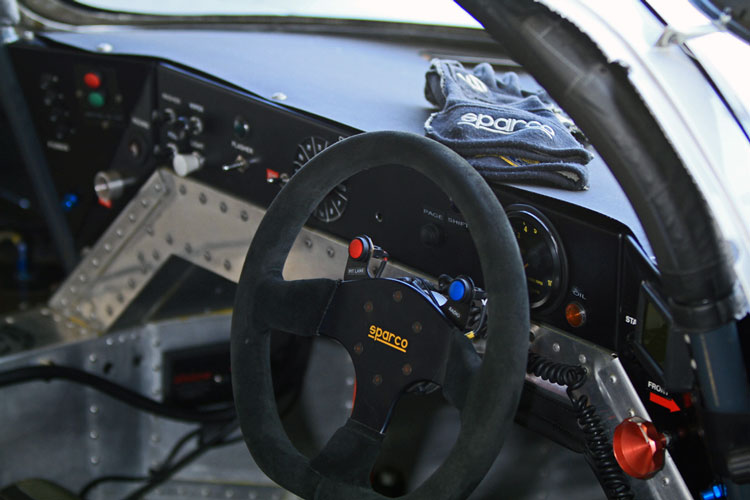With Le Mans week upon us, discussion is going to focus on the four major prototype brands, Audi, Toyota, Porsche and Nissan. For a taste of something a little different, TheCheckeredFlag.co.uk is taking a look at Mercedes-Benz last winner, the Sauber-Mercedes C9.
Debuted at the start of the 1987 FIA World Sports Prototype Championship, the C9 was the replacement to the Sauber-Mercedes C8, the troubled Group C racer which failed to win Le Mans and took only one race win in the 1986 World Championship season. It was only the second car developed between Sauber and Mercedes-Benz when the German marque returned to prototype racing. While the C9 went on to become iconic, its birth wasn’t smooth.
The car made its competitive debut at the 1000km of Silverstone at the hands of Australian Mike Thackwell and legendary French racer turned team owner Henri Pescarolo. The effort was run under the banner of Kouros Racing and failed to finish in the UK.
It was the same story at Le Sarthe where two cars competed, the first with Hideki Okada joining the two Silverstone drivers. Thackwell also competed in the second car along with Jonny Dumfries and Chip Ganassi. The #61 Pescarolo, Thackwell and Okada machine succumbed to damage from a puncture while the #62 suffered gearbox failure.
Norisring and Brands Hatch were both retirements for privateer entries before Kouros took charge again and brought the car to its first finish at Spa-Francorchamps. The car didn’t travel to Fuji for the final round of the championship.

A new year and a new name saw the car return to competition at the hands of Team Sauber Mercedes. The change was instant; an all-new driver line up headlined by the German race Jochen Mass took the first round of the championship at Circuito de Jerez in Spain. A season long battle ended 6-5 in favour of the Silk Cut TWR Jaguars with the Walkinshaw outfit taking the big race at Le Mans.
The 1988 Le Mans was a major anti-climax for a team looking to be on pace. The arrival of the Japanese brands, with Nissan, Toyota and Mazda and renewed challenges from Lancia, Porsche and Jaguar put added pressure on the team but a problem with the tyres forced the withdrawal of the factory Mercedes. To add insult to injury, the C8 of Noel de Bello and the C6 BMW C2 class machine of Roland Bassler both suffered engine failures and retired.
In 1989 the programme came good as the Sauber-Mercedes C9 took seven wins from eight rounds. With the exception of Dijon-Prenois, where a team answering to the name of Joest took victory, the Saubers cleaned up. At Le Mans the C9 claimed a 1-2 finish with the team running three cars for the first time. The third car took fifth place in the big race.
Among the Sauber’s achievements is the insertion of two chicanes into the Mulsanne Straight. In 1989 one of the three cars hit 400kph or 248mph on the old layout of Le Sarthe. In 1990 the new layout with what we now know as the Forza and Playstation chicanes was first raced.
After claiming its final victory at the Autodromo Hernandos Rodriguez in Mexico the Sauber C9 was retired from top flight racing. The team and Mercedes-Benz developed the new C11 for the 1990 but when Le Mans was not included in the World Sports Prototype Championship they decided not to race at the 24 hours.
Retirement has treated the C9 well and now it enjoys undisputed iconic status. The C9 is still seen at historic festivals around Europe, racing against its contemporaries. It is also a regular feature at shows such as the annual AUTOSPORT International Show at the NEC.



